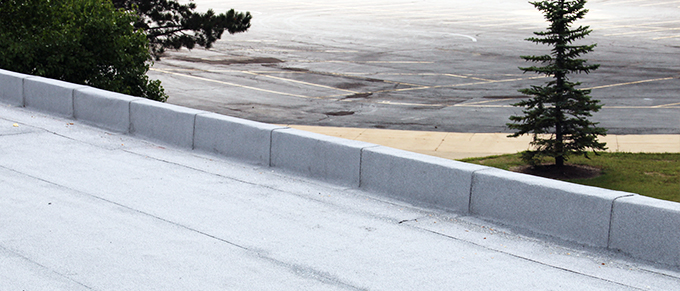Low Energy Prices Boost Popularity of BUR Systems for Commercial Roofs
Built-up roofing (BUR) has been around for well over 100 years and has maintained an excellent track record. Still, when newer roofing membrane choices came along for low-slope commercial roofing, BUR, commonly referred to as "tar and gravel" roofs, took a back seat to single-ply systems, such as PVC, TPO and EPDM.
Perhaps the greatest threat to BUR as a viable commercial roofing option was during the energy crisis in the 1970s. The high cost and lack of petroleum made asphalt much more expensive. While single-ply systems had existed since the 1950s, they became the popular choice during the energy crisis as a cost-reduction alternative, along with modified bitumen.
While BUR never diminished in terms of outstanding performance, today’s lower energy costs have helped BUR systems regain popularity. And there’s nothing like competition to make an industry become more innovative. So let’s take a look at the pieces and parts of a BUR system.
Breaking It Down: What Comprises a BUR System?
BUR systems generally are composed of alternating layers of bitumen and reinforcing fabrics that create a finished membrane. The components of the BUR system consist of:
- Roof deck
- Vapor retarder
- Insulation
- Membrane: Bitumens for waterproofing; felts for stabilization/strengthening
- Surfacing material: Cap sheet, gravel embedded in bitumen, or a coating material; enhances the roofing system’s fire performance rating
BUR Advantages
- Strength: excellent track record for damage resistance due to multi-ply construction
- Durability: Great for heavy foot traffic; gravel surface provides damage protection
- Leak Control: Multi-layer protection forms a watertight barrier
- Thermal performance
- Works with all roof deck types
- Adaptable for any surface penetration or flashing detail
- Improved formulas resist weathering
- Proven reliability for 100 years: BUR systems often exceed their warranty and last up to 50 years
See related blog: How to Choose the Right Commercial Roofing System
Overcoming BUR Challenges
One of biggest complaints about BUR is the odor. The industry has worked hard to address this issue through the introduction of low-fuming asphalt and cold-applied adhesives. Another option for hot-applied asphalt is to stage the kettle in a restricted area. All of these options help to negate this issue and make BUR an attractive choice for commercial building owners.
Making the BUR Decision
Historically, gravel-surfaced BUR systems have had an outstanding track record for damage resistance. The success of conventional BUR can be attributed to its multi-ply construction and the damage protection provided by the gravel surfacing.
There are many options when selecting the right roofing system for your commercial facility. The Roberts Roofing team of certified roofing experts can walk you through the choices to determine the best roofing system for your commercial building.
Do you have questions about your commercial or industrial roof? We welcome you to download our free e-book, The Commercial Building Owner's Guide to Roof Replacement, to learn more.
Roberts Roofing Company has been a leading provider of innovative commercial and industrial roofing solutions in Cleveland, Ohio since 1981. We provide commercial repair, replacement and maintenance to serve companies of all sizes in Ohio and the surrounding region, offering a combination of technical expertise, custom solutions and quality workmanship to every project.
To find out more about selecting a commercial roofer in Cleveland, Ohio, simply fill out the form on this page and a member of our team will be in touch. Or, you may call us at 440.508.4068.

